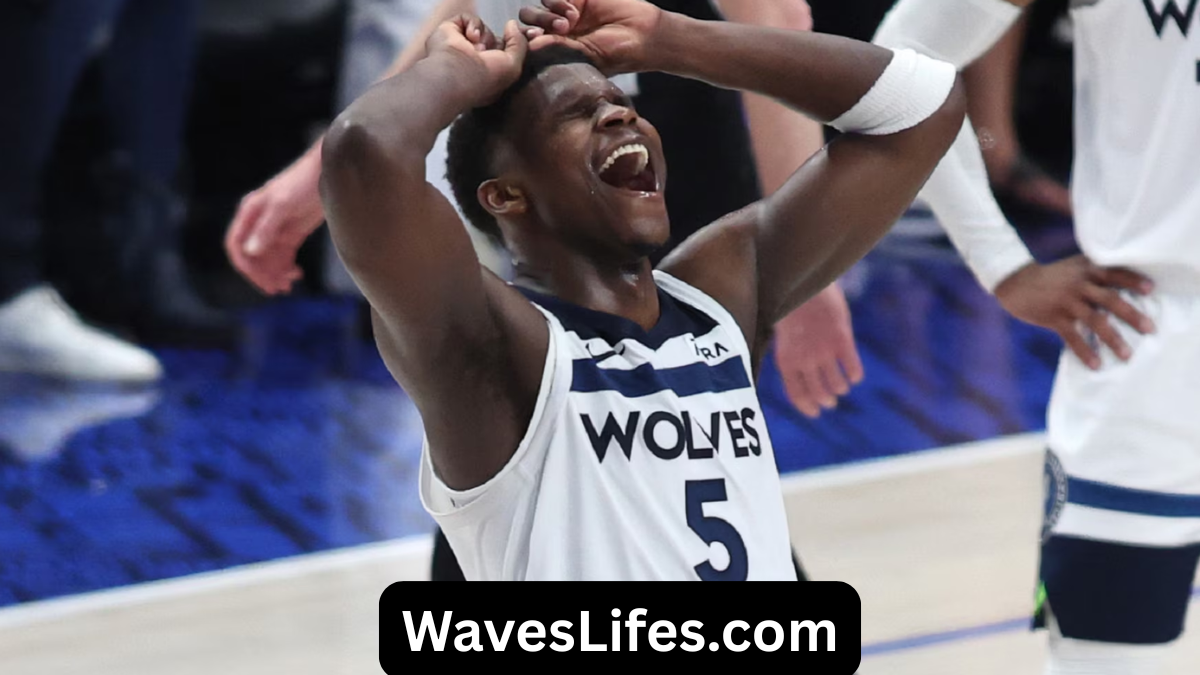Introduction to the Rivalry
Timberwolves vs Dallas Mavericks Match Player Stats The matchup between the Minnesota Timberwolves and the Dallas Mavericks consistently brings out high-octane basketball fueled by star power, team strategy, and intense competition. Both teams, with different histories and rosters, contribute to an exciting atmosphere whenever they clash on the court. Whether it’s regular season drama or playoff implications, games between the Timberwolves and Mavericks never fail to captivate basketball enthusiasts.
The clash not only signifies the efforts of two strong franchises but also reflects the individual brilliance of key players whose statistics tell the full story of each matchup. By analyzing player stats, fans and analysts alike can gauge who stepped up, who faltered, and how each contribution shaped the game’s outcome.
Star Players and Key Contributors
One of the highlights of any Timberwolves vs Mavericks game is the performance of star players. Luka Dončić of the Mavericks and Anthony Edwards of the Timberwolves are often at the center of attention. Their performances set the tone and influence the direction of the game from start to finish. Dončić, known for his court vision and scoring prowess, often leads the Mavericks in points, assists, and rebounds, while Edwards brings athleticism, energy, and clutch scoring to the Timberwolves.
But beyond the superstars, the games are shaped by contributions from role players such as Karl-Anthony Towns, Rudy Gobert, Kyrie Irving, and emerging talents on both sides. Whether it’s a crucial rebound, a timely three-pointer, or tough defensive Timberwolves vs Dallas Mavericks Match Player Stats stops, these moments are reflected in the game stats and often prove decisive.
Offensive and Defensive Highlights
Looking into the offensive numbers, points per game, field goal percentages, and three-point shooting accuracy are essential indicators of a player’s effectiveness. For example, a matchup where Dončić scores over 35 points on more than 50% shooting shows his offensive dominance. On the other side, if Anthony Edwards combines 30+ points with efficient shooting and strong finishes at the rim, it demonstrates his ability to keep the Timberwolves competitive.
Defensively, player stats such as steals, blocks, and defensive rebounds give insight into how well a team neutralizes the opposing offense. Rudy Gobert, a former Defensive Player of the Year, often contributes with multiple blocks and rebounds, anchoring the Timberwolves’ paint defense. The Mavericks might counter with defensive hustle from players like Derrick Jones Jr. or Maxi Kleber, who can switch effectively and challenge shots.
Bench Impact and Depth Analysis
Depth plays a crucial role in long games, especially during back-to-back matchups or games that go into overtime. Bench players who can come in and maintain or shift momentum are invaluable. Statistical analysis of bench scoring, assists, and minutes played reveals how much trust the coaching staff places in second units.
When the Timberwolves bench provides solid contributions, such as double-digit scoring from reserves or high assist numbers from a backup point guard, it alleviates the pressure on starters. The Mavericks benefit similarly from their role players, who can hit timely threes or provide defensive support.
Turnovers and Ball Movement
Turnovers are one of the most critical metrics in determining the flow and control of a game. Players who minimize mistakes while distributing the ball efficiently show up in assist-to-turnover ratios. A high number of turnovers from either team often results in fast-break opportunities and easy baskets for the opponent.
Ball movement is another statistical aspect worth noting. Team assists reflect unselfish play and offensive synergy. When Dončić racks up double-digit assists, it indicates the Mavericks are moving the ball well and creating open looks. Similarly, when the Timberwolves post high assist totals, it usually means Edwards and Towns are making smart plays out of double teams.
Rebounding Battle and Second-Chance Points
Rebounding is where games are often won or lost, especially in tight contests. The battle on the boards, whether offensive or defensive, plays a vital role in possession control. Players like Gobert and Towns are known for their rebounding prowess. Grabbing offensive rebounds leads to second-chance points, giving teams additional scoring opportunities that can tip the balance in their favor.
Defensive rebounding statistics show how well a team can end the opponent’s possession. If the Mavericks control the glass with players like Dwight Powell or Kleber pulling down key boards, it denies the Timberwolves opportunities to score off missed shots.
Shooting Efficiency and Shot Selection
Shooting percentages, particularly effective field goal percentage (eFG%) and true shooting percentage (TS%), offer a clearer picture of how efficiently players are scoring. These stats consider not just the number of shots made but also factor in three-pointers and free throws.
Games where players like Dončić shoot above 50% from the field while also making multiple three-pointers show a high level of offensive execution. For the Timberwolves, when Towns or Edwards post similar shooting efficiency, it often correlates with a strong offensive outing. Shot selection, visible through shooting charts and zone efficiency stats, tells how well players are choosing their spots and capitalizing on mismatches.
Free Throws and Fouls
Another critical aspect of any Timberwolves vs Mavericks matchup lies in free-throw shooting and foul management. Players who get to the line frequently and convert at a high rate add consistent points while putting opposing players in foul trouble. Dončić often excels at drawing fouls due to his crafty play, while Edwards uses his explosiveness to attack the rim and earn trips to the line.
Team foul statistics and personal fouls help identify who’s being too aggressive defensively and risking disqualification. A star player with early foul trouble can drastically alter game strategy and affect statistical performance.
Clutch Performance and Final Minutes
Player stats in the final five minutes of a close game reveal who thrives under pressure. These clutch statistics include shooting percentage, assists, turnovers, and defensive contributions when the game is on the line.
Dončić has earned a reputation for late-game heroics, often reflected in his crunch-time points and assists. Edwards, too, has showcased his ability to rise to the occasion with crucial baskets, defensive stops, or hustle plays in the final moments. Tracking these numbers highlights which players are dependable when everything is at stake.
Coaching Adjustments and Game Flow
While player stats dominate the conversation, coaching decisions also impact how these numbers play out. Rotational adjustments, defensive schemes, and timeout usage influence player performance. Coaches who make timely changes—like double-teaming a hot shooter or inserting a bench player with a favorable matchup—can tilt the game in their team’s favor.
The effect of these adjustments often shows in second-half statistics or fourth-quarter performance. A team that comes back from a deficit or pulls away late typically benefits from strategic decisions that optimize player output.
Overall Team Stats Comparison
When evaluating a full game between the Timberwolves and Mavericks, comparing overall team statistics provides a comprehensive picture. Metrics like team shooting percentage, assists, rebounds, turnovers, and bench points illustrate which side had the better game collectively. Even if individual stars shine, a poor showing in team stats often correlates with a loss.
Looking at recent games between the two, it’s often evident that when the Timberwolves dominate in the paint and on the boards, they control the pace. Conversely, the Mavericks usually excel when they shoot efficiently from beyond the arc and win the turnover battle.
Conclusion: A Game of Numbers and Narratives
The Timberwolves vs Dallas Mavericks matchup is more than just a game; it’s a convergence of talent, tactics, and statistics. Every rebound, assist, and point adds to a narrative that fans dissect long after the final buzzer. By analyzing player stats in depth, one can understand the rhythm of the game, identify key turning points, and appreciate the performance of both stars and supporting cast.
Statistics bring clarity to what the eyes see during the game. They validate the impact of players who may not fill highlight reels but make winning plays. As the Timberwolves and Mavericks continue to build on their rivalry, expect the player stats to remain a central part of the story.
FAQs
Who usually scores the most in Timberwolves vs Mavericks games?
Luka Dončić often leads the Mavericks in scoring with high-volume shooting and excellent free-throw efficiency. For the Timberwolves, Anthony Edwards or Karl-Anthony Towns usually top the scoreboard.
What are the key stats to watch in their matchups?
Important stats include points, assists, rebounds, shooting percentage, turnovers, and free-throw attempts. Clutch time statistics also reveal a lot about player effectiveness under pressure.
How does Rudy Gobert impact the Timberwolves statistically?
Gobert influences the game through rebounds, blocks, and interior defense. His presence often limits second-chance points and helps control the paint.
Do bench players have a significant role in these games?
Yes, bench contributions can swing momentum. Scoring from reserves and energy plays are vital, especially in tight contests or games with foul trouble.
How often do these teams go into overtime?
While not extremely common, overtime games have occurred in this rivalry due to closely matched rosters and competitive play styles.
Which team generally performs better in recent years?
Performance varies season to season based on roster changes and form. The Mavericks, led by Dončić, have had playoff success, while the Timberwolves continue developing their young core for consistent contention.
What role do coaching strategies play in these games?
Coaching strategies, such as defensive schemes, player rotations, and in-game adjustments, significantly impact player stats and game outcomes.
How important are free throws in their contests?
Free throws are crucial, especially in close games. Players like Dončić and Edwards can shift momentum and draw fouls, which affects both team strategy Timberwolves vs Dallas Mavericks Match Player Stats and stat lines.
Which matchup is most exciting to watch?
The head-to-head between Luka Dončić and Anthony Edwards is always a fan favorite, showcasing two dynamic stars with different but equally impactful playstyles.





